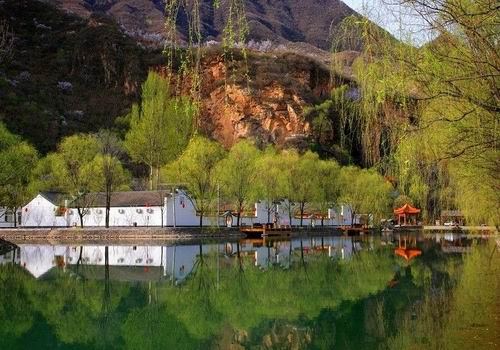Tuesday, December 18, 2012
Beijing: Pearl Spring
You might have heard about the “Flower Sea of Four Season” in Yanqing County. In the eastmost end of the famous flower valley locates the Town of Pearl Spring. People who have been here will say: “ Pearl Spring — it’s not just a beautiful name.” There is a magical spring in the town of Pear Spring. It has been said that Emperor Yongle of Ming Dynasty(1368-1644) had drunk the spring water here during the process of fighting north, and then gave it the name “Pear Spring”. The diameter of the artesian well is 10 meters and the depth of it is more than 3 meters. In the middle of the well, there is a stone-paved steep staircase which can lead people to the depth of the well.
There is nothing new in the first sight of the green spring water, but when you look more carefully, there are several clusters of bubbles gushing out, just like pearls off the line. If somebody shouts loudly at this moment, the “pearls” will increase obviously and the surging speed will enhance too. When the onlookers chant slogans together and clap according to a certain rhythm, the spring will also give you an active “reply”— the bubbles will churn up suddenly and pouring out from the bottom of the pool. The rolling bubbles makes the pool like a boiling pot. The mystery lies in the rich mineral contents like calcium, magnesium, and carbon dioxide gas. With the changes of ambient pressure, it will emit varying amounts of bubbles. The latest Beijing Xian tour gave me the chance to visit the Pearl Spring and witness its “magic power”.
Around the magical spring, dozens of flower species such as lavender, coreopsis, agastache rugosa, coreopsis, purple perilla, verbena, spiderflower, straw flower and marigold etc are planted, which forms a theme park of over 1300-mu area. In summer and autumn days, the lovely flowers emit secret fragrance, presenting a feast for your eyes.
In the Xian package tour, I encountered another magical thermal spring in Huaqing Pool, which has been the hot spring bath of Huaqing Palace in Tang Dynasty.
Subscribe to:
Post Comments (Atom)







No comments:
Post a Comment